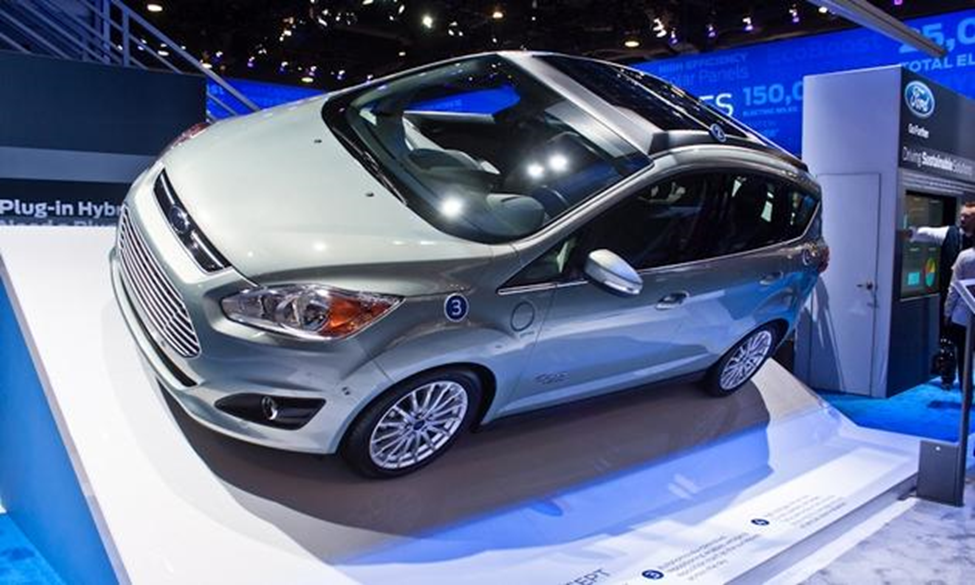Ford’s C-Max Solar Energy Concept is a “plugless plugin,” said Donna Bell, which initially sounds silly — as if the carefully structured chaos and noise of CES may have finally gotten to her. But as someone who has been managing Ford’s electric vehicle infrastructure for the past 20 years, she isn’t being facetious.
Solar panels on the roof of a car aren’t anything new — the Fisker Karma used them to power the radio and other in-car accessories, to cite a soon-obscure example. But no, dismissed Bell, “We wanted to do more than just powering a fan or running the radio. We wanted to make it useful for the driver to get from Point A to Point B.”
The C-Max Concept at Vegas, which was built with collaboration from SunPower and the Georgia Institute of Technology, features a 275-watt panel that receives enough charge in an hour to drive exactly 1 mile on batteries alone. But give it six hours’ worth of direct sunlight, comparable to charging in a 120-volt socket, and it can drive 21 miles on electricity — the same as a regular Energi. Why is this?
Because suspended above the panels is a giant Fresnel lens that serves as a magnifying glass to concentrate sunbeams into the solar panels. Fresnel lenses are more commonly integrated into the panels themselves, but that adds weight. Take the Fresnel lens and put it in a fixed canopy, then park the car underneath and the car can be lighter in weight, and it can charge with the sun as it sits.
The solar panels can supply energy to the car while in motion, Bell elaborated, much in the same way regenerative braking works. But that wasn’t the goal. The real goal was to envision a world where people drive to work in their solar-equipped C-Max Energis, leave their cars in a parking lot or garage that’s roofed by these solar concentrators, then have enough charge to get home. Meanwhile, the cars stealthily roll forward or backward autonomously as the sun moves across the sky, exploiting the most direct angle of sunlight to get the most charge.
That part seems a little farfetched. But the rationale behind the concept is to alleviate burden from the grid — charging an electric vehicle during the day is the most expensive time to plug in. That’s also why Ford didn’t just explore a conventional canopy covered in solar panels, which are becoming more and more abundant.
“We’ve seen solar panels out there,” said Bell. “We’ve never seen the solar concentrator. Which makes it cool for us. You can have the panel on the car and have it be more useful.”



